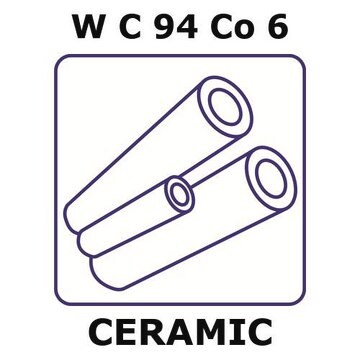GF10466760
Iridium
wire reel, 0.3m, diameter 0.5mm, as drawn, 99.9%
Sinonimo/i:
Iridium, IR005130
About This Item
Prodotti consigliati
Saggio
99.90%
Stato
wire
Produttore/marchio commerciale
Goodfellow 104-667-60
Resistività
4.71 μΩ-cm
L × diam.
0.3 m × 0.5 mm
P. ebollizione
4130 °C (lit.)
Punto di fusione
2450 °C (lit.)
Densità
22.65 g/cm3 (lit.)
Stringa SMILE
[Ir]
InChI
1S/Ir
GKOZUEZYRPOHIO-UHFFFAOYSA-N
Cerchi prodotti simili? Visita Guida al confronto tra prodotti
Descrizione generale
Note legali
Scegli una delle versioni più recenti:
Certificati d'analisi (COA)
It looks like we've run into a problem, but you can still download Certificates of Analysis from our Documenti section.
Se ti serve aiuto, non esitare a contattarci Servizio Clienti
Possiedi già questo prodotto?
I documenti relativi ai prodotti acquistati recentemente sono disponibili nell’Archivio dei documenti.
Il team dei nostri ricercatori vanta grande esperienza in tutte le aree della ricerca quali Life Science, scienza dei materiali, sintesi chimica, cromatografia, discipline analitiche, ecc..
Contatta l'Assistenza Tecnica.







